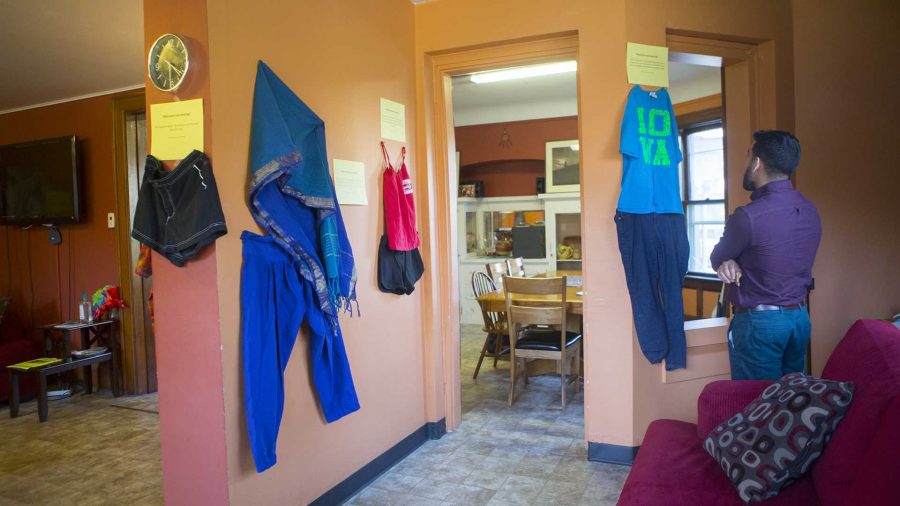The Rape Victim Advocacy Program held an event depicting tangible narratives of sexual-assault victims.
By Rhiana Chickering
[email protected]
Articles of clothing portraying the narratives of sexual-assault victims were displayed on the walls of the Latino Native American Cultural Center on Wednesday during the Rape Victim Advocacy Program’s What Were You Wearing? art installation.
Alongside the clothing were brief, typed depictions of each victim’s story. The narratives immersed attendees into the victims’ lives at the time of the assault — what they were thinking, where they were, and, of course, what they were wearing.
“We want to send the message that the only person responsible for sexual violence is the perpetrator of that crime, so this is one way to address that to show that it doesn’t matter what someone is wearing,” said Susan Junis, the RVAP assistant director. “The fact is that they were hurt, and they were hurt by someone who made the choice to hurt them.”
The art installation is also based on the poem “What I was Wearing,” by Mary Simmerling.
In the poem, Simmerling illustrates what she was wearing with great detail and how she remembers what her perpetrator was wearing. However, no one ever questioned what her perpetrator was wearing. People only questioned what she, the victim, was wearing.
RVAP Executive Director Adam Robinson described the art installation as a “stark response to victim blaming.”
It included the stories from a variety of victims — girls, boys, children, adults, and individuals of numerous national origins.
RELATED: Sister vigil for assault victims held at UI
To establish the art installment, RVAP has collected stories for several years from sexual-assault survivors from different rape victim advocacy centers and locations, which portrays that sexual assault is not occurring in one place but is a widespread problem.
The clothing that accompanies these stories was purchased at a thrift shop, representing that the victims’ clothing that they wore was common and easily found.
It was important to RVAP to hold the art installation at the cultural center.
“It has been a safe place for a long time, where [all marginalized identities] can (re)claim narratives,” said Jesús Payán, the center’s coordinator of multicultural programs.
(Re)claim, rather than “reclaim,” emphasizes claiming something that was never really lost. Similar to how many victims of sexual assault feel as if they lost something after the assault, or that the assault now defines their narrative, but it is something that they never truly lost.
What Were You Wearing? was initiated by former UI RVAP Director Jen Brockman, now the director of the Sexual Assault Prevention and Education Center at the University of Kansas.
“We chose to use the clothing as the catalyst to humanize the statement …We wanted to create something to humanize the answer and placed the work of bearing witness to the answer back on the shoulders of the community,” Brockman wrote in an email to The Daily Iowan.
Brockman said they wanted the community to see themselves reflected in the outfits and the stories.
“The violation is not simply woven in to the fabric of the material, it is a part of the survivor’s new narrative,” she said. “If only eliminating sexual violence was as easy as changing our clothes; but instead, it is as complex as discovering what enabled us to ask ‘What Were You Wearing?’ in the first place.”
Click below for more photos
[masterslider id=”123″]










